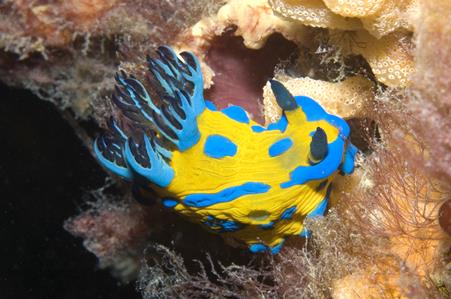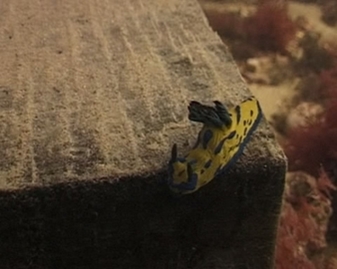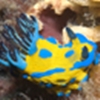Other Names
- Verco's Nudibranch
General Description
Body shape slug-like with gill structures visible as a single cluster on back of the animal. Pattern includes shades or colours of yellow and/or blue. Animal up to 12 cm long.
Biology
This large nudibranch is well known to divers because of its striking colour pattern. It eats the dark blue-green bryozoan Bugula dentate.
Habitat
Usually on or near its host bryozoan, to depth of 50 m.
Reefs
Sponge gardens
Coastal shores
Distribution guide
New Zealand and southern Australia.
Species Group
Nudibranchs and allies › Nudibranchs
Depth
Shore (0-1 m)
Shallow (1-30 m)
Deep ( > 30 m)
Water Column
Max Size
12 cm
Diet
Carnivore
Commercial Species
No
Global Dispersal
Recorded in Australia
Identify
Conservation Status
- DSE Advisory List : Not listed
- EPBC Act 1999 : Not listed
- IUCN Red List : Not listed








